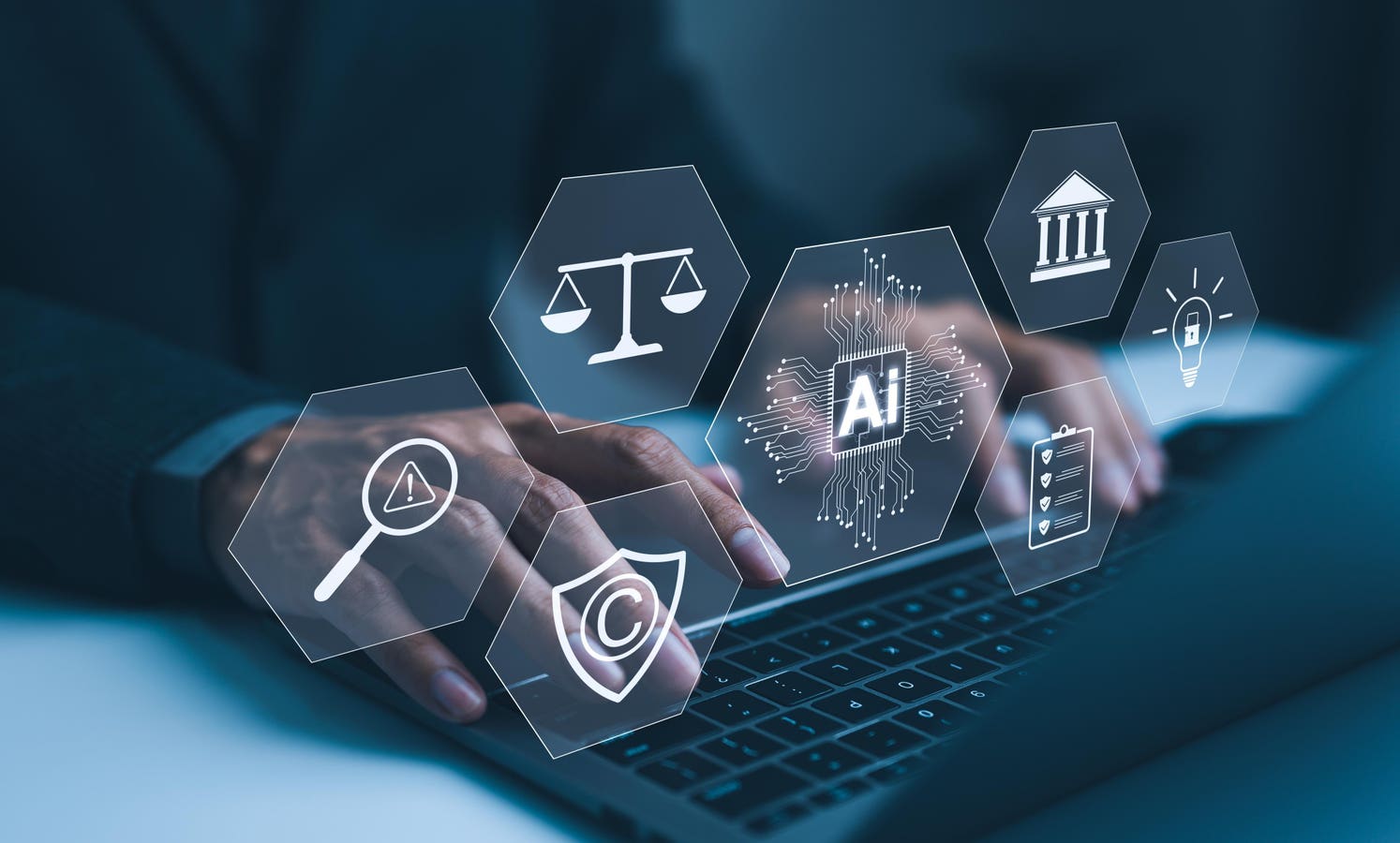Innovation and Technology
The Importance of Boundaries: Setting Healthy Limits for Yourself in Hybrid and Remote Work

Introduction
In the era of hybrid and remote work, setting boundaries is more crucial than ever. With the blurring of lines between personal and professional life, it’s easy to feel overwhelmed and burnt out. As professionals, we often struggle to separate our work and personal lives, leading to decreased productivity, increased stress, and a general feeling of exhaustion. In this article, we’ll explore the importance of setting healthy boundaries in hybrid and remote work, and provide tips on how to do it effectively.
What Are Boundaries?
Boundaries are limits that we set for ourselves to maintain a healthy work-life balance. They help us prioritize our tasks, manage our time, and maintain our energy levels. In the context of hybrid and remote work, setting boundaries is crucial because it allows us to separate our work and personal life, reducing the risk of burnout and improving our overall well-being.
Why Are Boundaries Important in Hybrid and Remote Work?
In hybrid and remote work, setting boundaries is important for several reasons:
-
Blurred Lines
In a traditional office setting, there is a clear distinction between work and personal life. However, in hybrid and remote work, this distinction is often blurred. With the flexibility to work from anywhere, it’s easy to fall into the trap of working long hours, even outside of work hours. This can lead to burnout and decreased productivity.
-
Lack of Structure
In a traditional office setting, there is a structured schedule, with set hours and breaks. In hybrid and remote work, this structure is often lacking, leading to the feeling of being constantly “on” without breaks or boundaries.
-
Increased Expectations
In hybrid and remote work, there is often a sense of expectation to be available 24/7, which can lead to feelings of guilt and pressure to respond to work-related tasks outside of work hours.
How to Set Healthy Boundaries in Hybrid and Remote Work
So, how can you set healthy boundaries in hybrid and remote work? Here are some tips:
1. Set Clear Expectations
Communicate your boundaries clearly with your colleagues, manager, and clients. Set clear expectations for your work hours, availability, and communication channels.
2. Create a Schedule
Create a schedule that includes dedicated work hours, breaks, and time for personal activities. Sticking to your schedule will help you stay focused and avoid the feeling of being overwhelmed.
3. Designate a Workspace
Designate a specific workspace that is free from distractions and interruptions. This will help you stay focused and avoid the temptation to work outside of work hours.
4. Prioritize Self-Care
Prioritize self-care activities such as exercise, meditation, and spending time with loved ones. This will help you maintain your energy levels and reduce the risk of burnout.
Conclusion
In conclusion, setting healthy boundaries in hybrid and remote work is crucial for maintaining a healthy work-life balance. By setting clear expectations, creating a schedule, designating a workspace, and prioritizing self-care, you can maintain your energy levels, reduce the risk of burnout, and increase your overall well-being.
FAQs
Q: What are some common boundaries I can set in hybrid and remote work?
A: Some common boundaries you can set include setting clear work hours, designating a specific workspace, limiting your availability for work-related tasks outside of work hours, and prioritizing self-care activities.
Q: How do I communicate my boundaries to my colleagues and manager?
A: Communicate your boundaries clearly with your colleagues and manager, and get their feedback and support. This will help you avoid misunderstandings and ensure that your boundaries are respected.
Q: What if my colleagues or manager don’t respect my boundaries?
A: If your colleagues or manager don’t respect your boundaries, it’s essential to re-establish them and communicate them clearly. You can also consider setting clear expectations for communication channels and availability, and prioritize self-care activities to maintain your energy levels.
Innovation and Technology
Rethinking Compliance in the Digital Era

Introduction to AI in Compliance
Compliance has long been one of the least glamorous aspects of cybersecurity. Necessary, yes—but often repetitive, reactive and resource-draining. That’s changing fast. AI is starting to reason over frameworks, detect inconsistencies and make recommendations about what your business should do next. Vanta AI Agent is a clear example of this evolution – aiming to turn governance into a dynamic, data-driven process. But it also raises new questions about transparency, accountability and whether trust itself can—or should—be automated.
The Evolution of Compliance
I recently spoke with Jeremy Epling, chief product officer at Vanta, about the motivation behind the agent. “From day one, this whole notion of automated compliance and continuous GRC, continuous control monitoring has been at the heart of our founding mission,” he told me. Epling described the current landscape of compliance as burdened by unstructured files—policy documents, screenshots and spreadsheets—and emphasized that the AI Agent is designed to automate and unify those fragmented processes.
Compliance, Once a Bottleneck, Now a Business Enabler
For many companies, compliance has historically been a blocker—something that slows down audits, sales and vendor onboarding. Tony English, CISO at WorkJam, described that pain firsthand for me. “Before Vanta, our compliance efforts were manual and largely time-consuming,” he said. “It became a bottleneck for our small security team, slowing down sales cycles and diverting valuable time toward documentation and evidence gathering.” With the shift to continuous monitoring, platforms like Vanta—and increasingly, their AI agents—promise not only faster audits but smarter ones. English said WorkJam now spends about an hour a week on compliance tasks instead of seven or eight. “Compliance has moved from a resource-draining task into a function that strengthens our overall security posture.”
The Role of AI in Compliance
The significance here isn’t about one vendor. It’s about a broader industry trend: compliance moving from episodic to real-time, from reactive to proactive. And AI is the connective tissue making that shift possible. Of course, the more autonomy we grant AI, the more critical it becomes to know how it works. Is it explaining its reasoning? Is it using up-to-date evidence? Can it cite its sources? “A major focus for us has been on AI quality,” Epling said. “We have an internal team of former auditors and GRC experts that go through and run our human eval loop on golden data sets… and we lean into references and explanations. If we give a recommendation, we tell you where it came from.”
What It Means to Trust an Algorithm
That traceability matters. With security reviews and audits becoming more dynamic, AI has to be more than helpful—it has to be right. And when it’s not, there must be clear signals and paths for correction. Platforms that support feedback loops, accuracy metrics and user control (such as setting concise vs. verbose answer preferences) are more likely to foster real trust.
The Human Element in a Machine-Led World
Despite impressive gains, AI agents aren’t eliminating human expertise—they’re redefining it. “We’ve seen a huge shift,” English told me. “Responsibilities are now more transparent, ownership is better distributed and our security and engineering teams operate from a shared view of strong compliance.” The AI Agent, in this case, isn’t replacing the team—it’s amplifying it. By detecting policy conflicts, pre-validating evidence and flagging overlooked risks, it frees up human bandwidth to focus on higher-order tasks. And that kind of augmented intelligence might be the most responsible application of AI in compliance today.
A Blueprint for What Comes Next
WorkJam sees Vanta’s AI Agent as the next logical step—automating routine tasks, identifying inconsistencies early and creating space for security to be a proactive business function. That aligns with what many GRC leaders now want: not just to check the box, but to build a culture of trust that’s as responsive as the threats it faces. As AI begins to write, monitor and enforce compliance, it’s reshaping more than workflows. It’s redefining the relationship between security teams and the systems they manage. The challenge ahead isn’t simply deploying more advanced agents—it’s making sure those agents remain transparent, accurate and accountable to human judgment.
Conclusion
Because trust can be accelerated by automation—but it can’t be outsourced entirely. The integration of AI in compliance is a significant step forward, but it requires careful consideration of transparency, accountability, and the role of human expertise. As the industry continues to evolve, it’s crucial to strike a balance between the benefits of automation and the need for human judgment and oversight.
FAQs
Q: What is the role of AI in compliance?
A: AI is being used to automate compliance tasks, detect inconsistencies, and make recommendations for improvement.
Q: How does AI impact the compliance process?
A: AI can make the compliance process faster, smarter, and more proactive, reducing the burden on security teams and enabling them to focus on higher-order tasks.
Q: What are the challenges of implementing AI in compliance?
A: The challenges include ensuring transparency, accountability, and accuracy, as well as addressing the potential for over-trust and the erosion of scrutiny.
Q: How can organizations ensure that AI is used effectively in compliance?
A: Organizations can ensure effective use of AI by prioritizing transparency, accountability, and human oversight, and by implementing feedback loops, accuracy metrics, and user control.
Q: What is the future of compliance in the age of AI?
A: The future of compliance will likely involve a combination of automation and human expertise, with AI augmenting the capabilities of security teams and enabling them to build a culture of trust that is responsive to emerging threats.
Innovation and Technology
Connecting with Buyers in the AI Era

Introduction to the Era of Buying Network
Your B2B buyer’s network is driving organizations to reimagine their messaging. Gone are the days when targeting a single decision-maker with a one-size-fits-all message would suffice. Even the days of building messaging for the buying group alone are now numbered. Welcome to the era of the buying network — a complex web of external influencers, customers, partners, providers (that’s us!), and even buyer AI such as ChatGPT, all of which are engaging with our buyers in the buying process. This new era is characterized by:
- Buyers who have grown up using technology and are accustomed to self-service interactions and options.
- Increasingly large internal buying groups that contribute to buying complexity.
- Growing reliance on external influencers for third-party insights and validation.
- Unparalleled adoption and dependence on generative AI for support throughout the entire purchasing process.
Connected Messaging Provides The Link Between Audiences
As marketers, we must rethink our approach to building and deploying messaging. We’re dealing with participants that demand a lot of insight from us, and we can’t just shout into the void hoping that our message sticks. Instead, messaging in the era of the buying network requires a more thoughtful approach, one that prioritizes building connected messaging that engages not only our buyers but all of the stakeholders and AI tools that they are increasingly turning to in order to help them buy better. This ensures that our message is not only heard but resonates everywhere.
Navigate The New Frontier By Building Messaging That Resonates Across Audiences
But how do we achieve this? It’s not just about crafting a great message; it’s about understanding the dynamics of the buying network and how each participant interacts with and influences the buying process. Here are five pointers to get you started:
- Know your audience (all of them). Dive deep into identifying and mapping your buyer’s buying network. Who are they? What motivates them? How do they prefer to receive information? The better you understand each participant, the more tailored and effective your messaging will be.
- Consistency is key. Your message needs to be consistent across all touchpoints and channels. This doesn’t mean being repetitive or boring; it means ensuring that the core message is clear, whether it’s being communicated through an email, a blog post, or even an AI chatbot.
- Leverage technology. Your buyers are using it, and so should you! Technology, and especially AI, is your ally in the quest for connected messaging. Use analytics to gain insights into how messages are received and shared within the buying network. While nascent, AI may eventually help personalize the message at scale, ensuring relevance for every member of the network.
- Foster collaboration. Encourage and facilitate dialogue within the buying network. When influencers, customers, and partners talk to each other, they reinforce your message and add their unique perspectives, making the narrative around your product or service even more compelling.
- Be human. Last but certainly not least, remember that at the heart of every B2B transaction, there are people. Your messaging should not only be clear and concise but also authentic. Buyers are looking for trust and relationships, so show empathy, understand their frustrations and challenges, and offer solutions that resonate on a human level.
Leveraging The Buying Network To Deliver Your Message
The rise of the buying network represents both a challenge but, more importantly, an opportunity for B2B marketers. It’s a call to elevate our game by being more thoughtful, strategic, and connected in our messaging. By doing so, we can engage more deeply with our audiences, build lasting relationships, and ultimately drive higher buyer satisfaction.
Conclusion
Remember, in the end, it’s not about shouting louder than everyone else; it’s about understanding and speaking directly to the needs and wants of our buyers by engaging with the buying network in a language that resonates with every member of it. This approach will lead to more effective messaging, stronger relationships, and ultimately, greater success in the B2B marketplace.
FAQs
- Q: What is the buying network?
A: The buying network refers to a complex web of external influencers, customers, partners, providers, and even buyer AI that engage with buyers in the buying process. - Q: Why is connected messaging important?
A: Connected messaging is crucial because it ensures that the message is not only heard but resonates everywhere, engaging not only buyers but all stakeholders and AI tools. - Q: How can I leverage technology for connected messaging?
A: You can leverage technology by using analytics to gain insights into how messages are received and shared within the buying network and by utilizing AI to personalize the message at scale. - Q: What are the key elements of effective messaging in the era of the buying network?
A: The key elements include knowing your audience, consistency, leveraging technology, fostering collaboration, and being human. - Q: What is the ultimate goal of mastering B2B messaging in the AI era?
A: The ultimate goal is to drive higher buyer satisfaction by engaging more deeply with audiences and building lasting relationships.
Innovation and Technology
The Future Of Healthcare Is Collaborative—And AI Is The Catalyst

Introduction to AI in Indian Healthcare
A quiet revolution is underway in the heart of a radiology lab at Apollo Hospitals in Chennai, India. Artificial intelligence is scanning high-resolution images, flagging anomalies, reducing the time for diagnosis, and improving accuracy. But what makes this advancement so powerful isn’t just the algorithm behind it. It’s the collaboration between a hospital, a tech company, and a university that makes AI innovation sustainable, scalable, and relevant to India’s complex healthcare landscape.
Across India, a new model of digital health transformation is emerging, one where partnerships are as crucial as platforms. For a country grappling with massive disparities in healthcare access and delivery, this shift couldn’t be more timely. These are the observations and conclusions from my peer, Dr. Priyanka Shrivastava, who is a Professor of Marketing & Analytics at Hult International Business School and an Executive Fellow at The Digital Economist.
The Double Burden of AI Innovation and Inequity
India’s healthcare system faces deep challenges: a rapidly growing population, stark urban-rural divides, a chronic shortage of medical professionals, and overstretched public infrastructure. While the proliferation of health-tech startups has brought promise, much of the innovation remains confined to urban pockets or pilot projects.
AI detects disease, streamlines diagnosis, and personalizes treatment. Tools like AI-powered nutrition coaches (HealthifyMe’s Ria) and automated diagnostic assistants (such as those used by Aindra or Columbia Asia Hospital) are transforming the delivery of healthcare.
Yet, these tools often encounter barriers due to a lack of interoperability, fragmented data systems, regulatory uncertainty, and resistance from overworked staff who fear that AI might be more of a disruption than an aid.
Technology alone cannot fix healthcare. But technology plus collaboration just might.
Why Collaboration Is the Real Innovation Before AI
In a recent study, Dr. Shrivastava and her colleagues surveyed 300 healthcare professionals across 50 institutions and held in-depth interviews with doctors, technologists, and policymakers. The results were striking: institutions with strong cross-sector collaborations consistently showed higher and more sustained AI adoption.
Three core insights emerged:
1. Shared Resources Bridge Structural Gaps
Urban hospitals often have access to advanced technology and data, whereas rural clinics often lack even basic diagnostic capabilities. But when these entities partner via telemedicine links, shared platforms, or co-funding arrangements, AI can extend its reach. For example, Apollo’s AI systems, when linked with satellite clinics, enable faster referrals and better triage in underserved regions.
2. Knowledge Exchange Builds Trust
Resistance to AI isn’t irrational—it often stems from a lack of understanding. The study found that joint workshops, where doctors and engineers co-learned and co-created, built buy-in from healthcare workers. When staff are trained with the tools and understand how they were developed, they are far more likely to embrace them.
3. Collaborative Culture Drives Continuity
AI isn’t plug-and-play. It requires regular updates, feedback loops, and cultural alignment. Institutions that formalized collaboration through MOUs, shared R&D labs, or co-published studies were more likely to sustain AI programs over the long term.
Case Study: Apollo Hospitals’ Triple-Helix Success With AI and Collaboration
Apollo’s AI-driven radiology initiative in Chennai is a textbook example. Faced with long diagnosis times and overburdened radiologists, the hospital sought a solution. Instead of simply buying an off-the-shelf AI tool, Apollo co-developed one with a university, providing algorithm expertise, and a startup delivering the technical infrastructure.
Doctors and developers worked side by side. The result? Diagnosis time dropped by 30%, and accuracy improved by 15%. Radiologists weren’t replaced—they were enhanced, with AI acting as a second pair of eyes. Continuous training and feedback ensured the system evolved with practice.
This wasn’t a one-off deployment. It was an ecosystem. And that made all the difference.
Policy in Action: eSanjeevani and the Public Sector Push
While Apollo represents a private success, the public sector isn’t far behind. India’s eSanjeevani platform, which added AI-supported teleconsultation features during the pandemic, saw a 40% increase in rural usage. This shows that with the right support and scale, AI can democratize access to care.
The National Digital Health Mission is another promising initiative. If executed well—with strong data privacy frameworks and open APIs—it can offer a common layer for innovation. Startups can plug into public records; government hospitals can access AI-enabled diagnostics; researchers can draw insights from anonymized data.
But for this to happen, policymakers must prioritize collaboration frameworks just as much as digital infrastructure.
What Policymakers and Leaders Must Do to Collaborate with AI
As India enters a defining decade for health innovation, here are four actionable takeaways from the research:
1. Create Incentives for Public-Private Partnerships
Tax breaks, innovation grants, and pilot funding for joint ventures in AI health can catalyze adoption. Startups gain credibility and scale; public hospitals get access to frontier tech.
2. Invest in Capacity Building
Set up AI literacy programs for frontline health workers. Encourage interdisciplinary training so doctors, nurses, and tech teams speak a common language.
3. Standardize Data Sharing Protocols
A national framework on health data interoperability is overdue. Without this, AI solutions cannot scale beyond one institution. Build trust through consent-driven, encrypted data-sharing norms.
4. Measure What Matters
Mandate impact audits for all health AI deployments—measuring not just tech efficiency, but patient outcomes, staff satisfaction, and system-level equity.
The Bigger Picture: AI as an Asset for Collaboration
The most inspiring part of this story? AI in Indian healthcare isn’t being driven solely by top-down mandates or Silicon Valley imports. It’s being shaped organically by Indian doctors, engineers, policy thinkers, and entrepreneurs who are joining forces.
This pluralistic model with many voices but one mission could well become a template for emerging economies around the world. In a landscape where access to a doctor can mean the difference between life and death, AI’s potential is undeniable. But its success will depend on something far more human: our ability to collaborate. The most transformative technology for health care is not an algorithm. It is the alignment of purpose, people, vision, and AI through collaboration.
Conclusion
The integration of AI in Indian healthcare is not just about technology; it’s about collaboration and partnership. By understanding the importance of shared resources, knowledge exchange, and collaborative culture, India can successfully implement AI in its healthcare system, leading to better patient outcomes and more efficient healthcare services. Policymakers and leaders have a crucial role to play in creating an environment that fosters collaboration and supports the development of AI in healthcare.
FAQs
- Q: What are the main challenges faced by India’s healthcare system?
A: India’s healthcare system faces challenges such as a rapidly growing population, urban-rural divides, a shortage of medical professionals, and overstretched public infrastructure. - Q: How can AI improve healthcare in India?
A: AI can detect disease, streamline diagnosis, and personalize treatment, thereby improving patient outcomes and healthcare efficiency. - Q: What is the importance of collaboration in AI adoption in healthcare?
A: Collaboration between hospitals, tech companies, and universities is crucial for sustainable, scalable, and relevant AI innovation in healthcare. - Q: What are the key takeaways for policymakers and leaders to collaborate with AI in healthcare?
A: Policymakers and leaders must create incentives for public-private partnerships, invest in capacity building, standardize data sharing protocols, and measure what matters in terms of patient outcomes and system-level equity.
-

 Career Advice6 months ago
Career Advice6 months agoInterview with Dr. Kristy K. Taylor, WORxK Global News Magazine Founder
-

 Diversity and Inclusion (DEIA)6 months ago
Diversity and Inclusion (DEIA)6 months agoSarah Herrlinger Talks AirPods Pro Hearing Aid
-

 Career Advice6 months ago
Career Advice6 months agoNetWork Your Way to Success: Top Tips for Maximizing Your Professional Network
-

 Changemaker Interviews5 months ago
Changemaker Interviews5 months agoUnlocking Human Potential: Kim Groshek’s Journey to Transforming Leadership and Stress Resilience
-

 Diversity and Inclusion (DEIA)6 months ago
Diversity and Inclusion (DEIA)6 months agoThe Power of Belonging: Why Feeling Accepted Matters in the Workplace
-

 Global Trends and Politics6 months ago
Global Trends and Politics6 months agoHealth-care stocks fall after Warren PBM bill, Brian Thompson shooting
-

 Global Trends and Politics6 months ago
Global Trends and Politics6 months agoUnionization Goes Mainstream: How the Changing Workforce is Driving Demand for Collective Bargaining
-

 Training and Development6 months ago
Training and Development6 months agoLevel Up: How Upskilling Can Help You Stay Ahead of the Curve in a Rapidly Changing Industry









